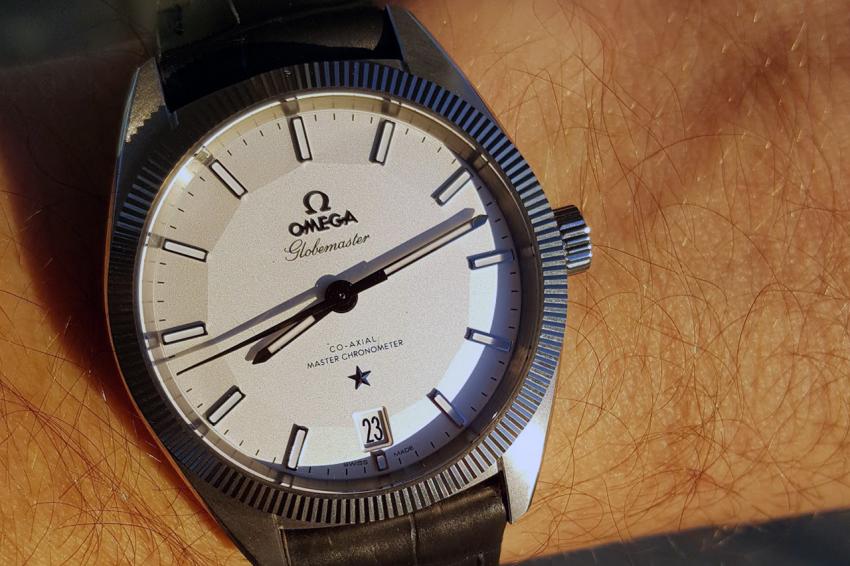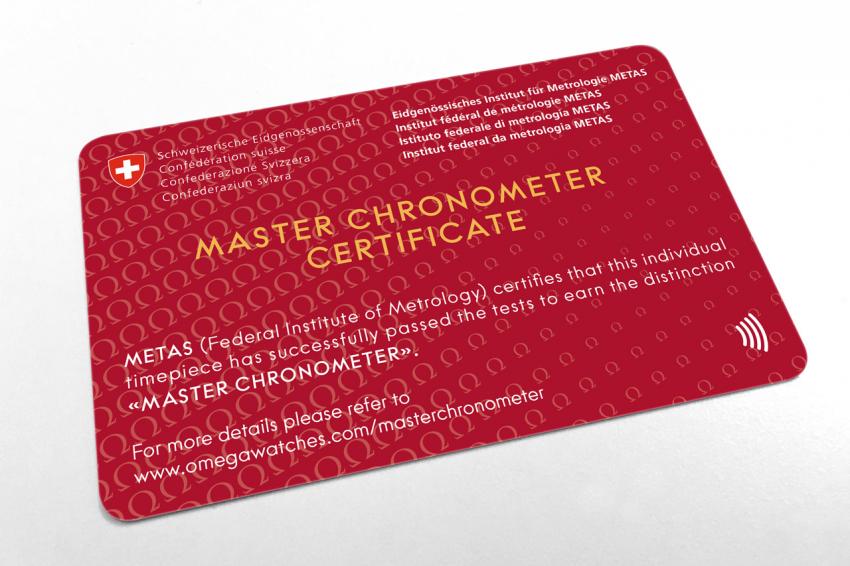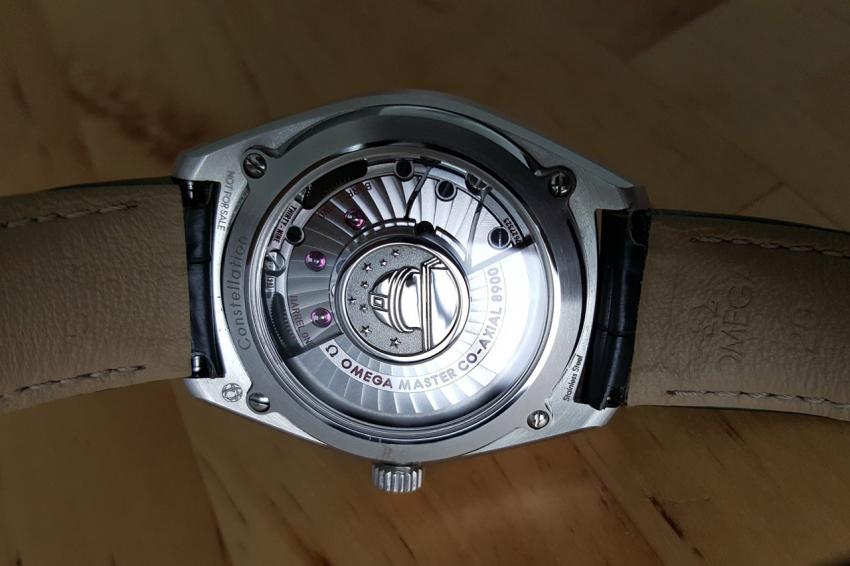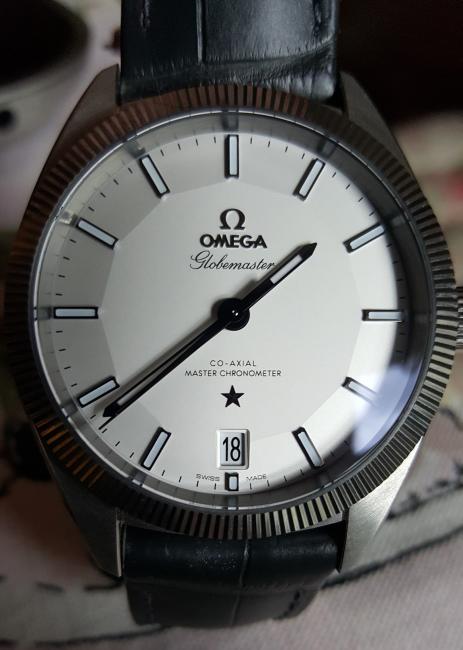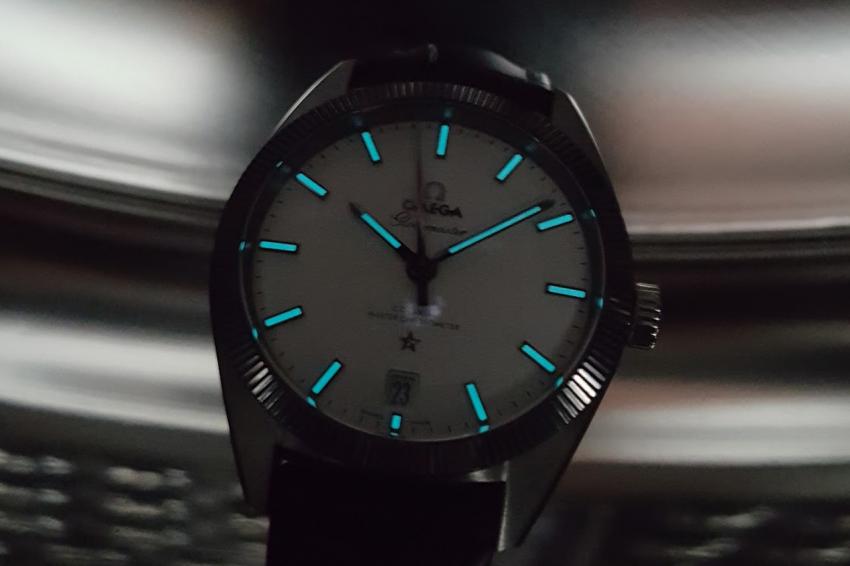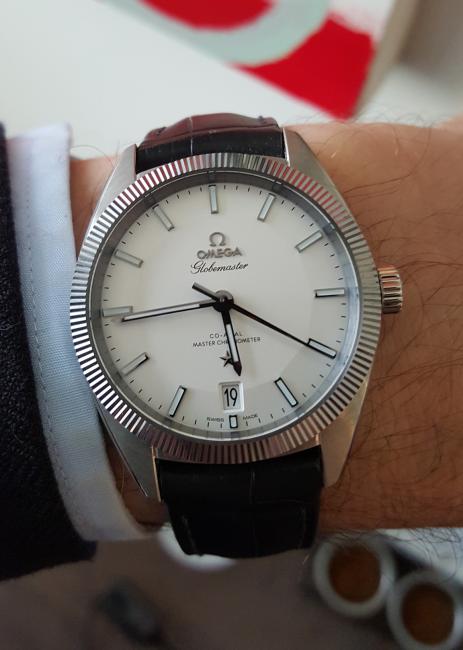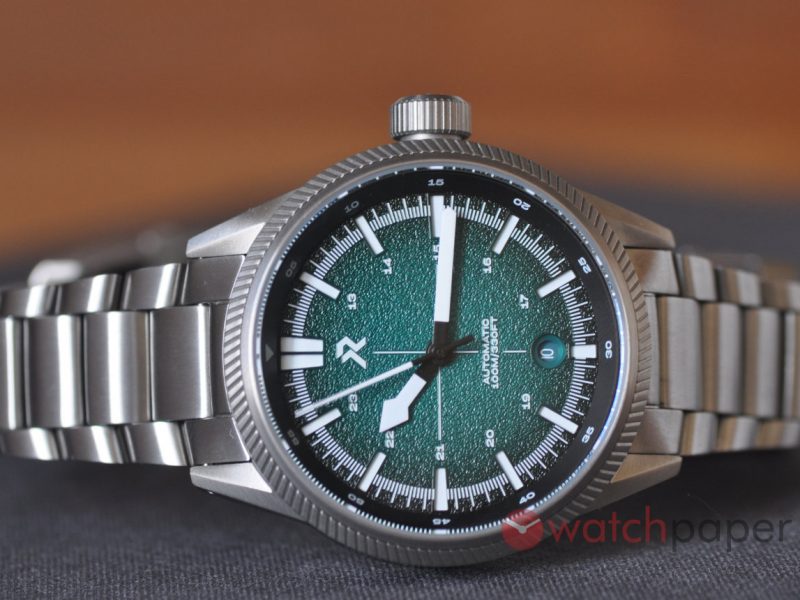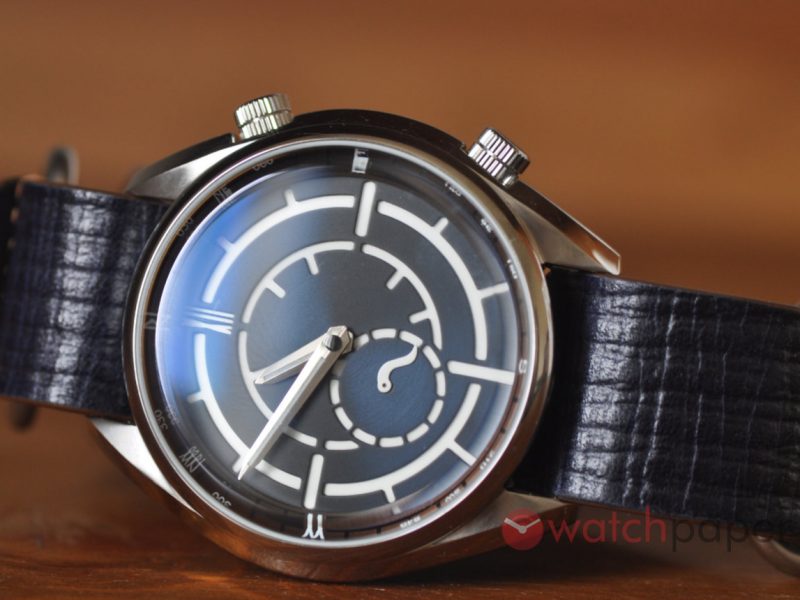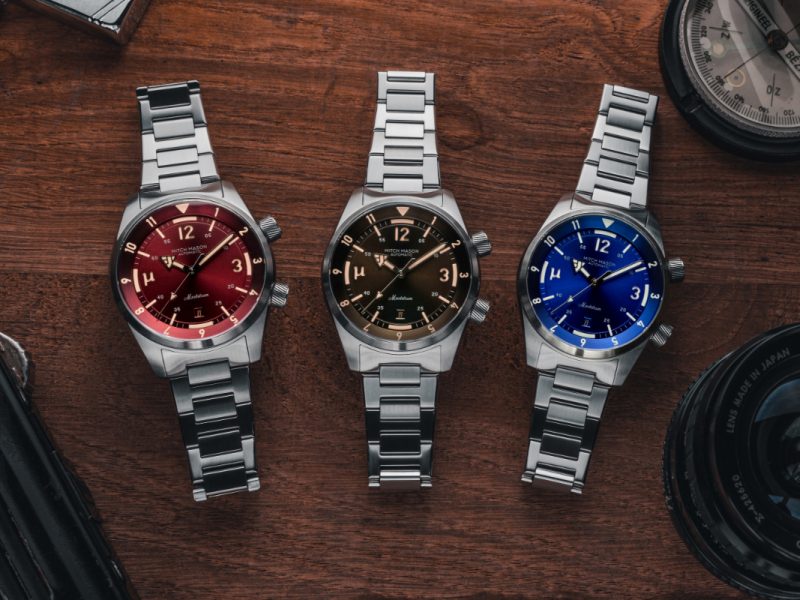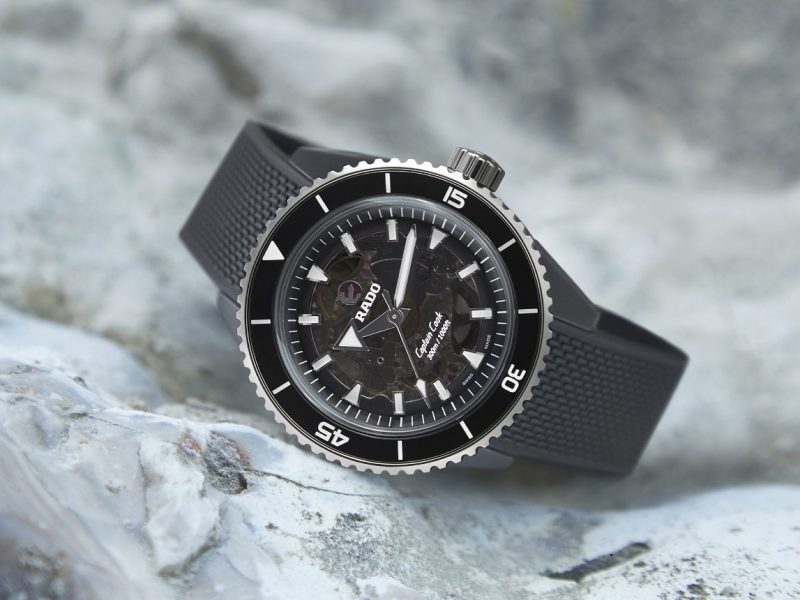Omega Globemaster: A week on the wrist
“Wow, that’s a really beautiful watch.” Consider for a moment how rarely this ordinary compliment is heard outside the world of watch lovers. We love watches for a host of different reasons, but secretly crave a little external validation from the non-obsessed. It gives us hope that there is an objective, almost empirical quality to our hobby that we can point to. Or it gives us a cherished memory of recognition: “remember that time that person noticed?” Even more remarkable, I got this compliment from my 20 year-old daughter when we were having dinner together. Let me repeat that: a twentysomething stood up and took notice of a watch I was wearing. Famously digital and analogue-oblivious, the smartphone generation is supposed to represent a demographic end of the line for wristwatches, but I now have hope. What grabbed her attention was the new Omega Globemaster I have been test-driving over the past week. The watch is a technical tour de force and, legitimately, deserves the “ground breaking” designation for its movement but after spending some time with it, I found its aesthetics were what left a more powerful and durable impression on me.
With the official announcement last week of the Globemaster’s release, the watch world has been frequently and correctly talking up Omega’s calibre 8900, which powers the watch. Late last year, Omega made public a new certification in partnership with METAS (the Swiss Federal Institute of Metrology) which disseminates Swiss official time and certifies a range of instruments from those measuring force and pressure to radiation in nuclear medicine. As an added bonus, they can also determine the quality of your alcohol. The certification process, which Omega uses to augment COSC, results in the designation “Master Chronometer” and the new Globemaster is the first watch to achieve this rating. Other companies, like Patek Phillipe and Jaeger Lecoultre, have created their own quality certifications, but Omega’s partnership with METAS is an open standard; any manufacture can submit their timepieces for certification though few (today) would be able to meet the standard. What does this new standard mean for consumers? During the press conference Nick Hayek, Swatch Group’s CEO – in addition to praising the technical excellence the Master Chronometer standard reflects – stressed its significance as a measure of trust. Trust between the consumer and the manufacture (in this case Omega), between the consumer and METAS, and more broadly between the consumer and the Swiss watch industry. In-house seals and certifications are, no matter how rigorous, still matters of faith unless the technical standards they represent can be independently verified. This certification establishes that trust through a respected third party.
The testing criteria are also important because they scrutinize the watch holistically; not just as a movement but, rather, as something you actually wear on your wrist. There are 8 tests the movement and the watch are put through as part of the certification process:
- The average daily precision of the watch is tested by placing it in different positions at different temperatures after which it is exposed to a 15,000 gauss magnetic field, demagnetized and checked again at different positions and temperatures.
- The movement is subjected to a 15,000 gauss field in two different positions.
- A repeat of number 2, the watch itself is subjected to a 15,000 gauss magnetic field and checked for accuracy.
- Test number one above takes place over 4 days, and the average deviation of the watch is measured during the procedure.
- The watch is pressure tested for water resistance by submersion.
- The duration of the power reserve is measured independently by photographing it.
- The deviation of the watch is measured in different positions at 100% power and at 33% power, testing accuracy across the watch’s stated power reserve.
- The watch’s running time is measured while it is placed in 6 different positions.
What’s more, each Globemaster is issued with a certification card (complete with access code) that allows you to check the results of the testing on your own watch.
Accuracy claims for the Globemaster put it at +5 seconds/day. My own experience with the Globemaster clocked in at an average gain of between +3 and +5 seconds per day and the bias to running, in this case, ever so slightly fast is actually a welcome one.
While the technical achievement embodied in the Globemaster will be the point of celebration (and coveting) for many watch lovers, I confess that, with my seemingly innate bias towards tool watches, the dress watch offerings from Omega that I had explored were confined to the DeVille line and, at that, the famously complex and complication-happy Chronoscope Co-Axial Rattrapante 4847.30.31. A week with the new Globemaster was an education in not only Omega’s extensive dress offerings but also in the historically significant Constellation line to which it belongs.
The Globemaster is what Omega called its Constellation watches for the American market when the line was first introduced in 1953, and this new Globemaster borrows design cues from several incarnations of the line from the 50s and 60s. The pie-pan dial, applied star at 6 o’clock, fluted bezel, and observatory medallion on the movement all signify the new Globemaster’s lineage clearly. In fact, the screw-down plate for the sapphire display back is inscribed with “Constellation”. The bezel was the target of some misguided sniping after the piece’s introduction at Baselworld earlier this year for its similarity to Rolex’s Datejust bezels, but this objection doesn’t hold up. Constellations of the 60s sport the fluted bezel, which makes its use in the Globemaster a straightforward borrowing from an already well-established design vocabulary.
But technical credentials and design context don’t speak directly to what it’s like to wear the piece every day. I have already mentioned how the watch got an unsolicited compliment from an unexpected quarter, and the sense of surprise is what sticks with me in my time with the Globemaster. Surprise at its heft and presence: despite its modest, but appropriate, dress watch sizing at 39mm, the watch feels substantial on the wrist and wears larger because of the uncluttered dial and the fact that the fluted bezel, instead of framing that dial, visually seems to push the eye outwards to the edge of the casing. Adding to the effect is the thin, polished, sloping upper edge of the case, which very subtly transforms a framing border into a reflective surface that, because it catches and plays with whatever light is available, turns a defining edge into something weightless and seemingly made of light. Surprise at the legibility: sceptical of white dials, I wasn’t sure about whether the Globemaster would easily convey the time at a glance in different lighting conditions. The worry was unfounded because the applied hour markers really stand out in their three dimensionality and have contrasting and well-defined borders, making legibility a non-issue. The stick markers aren’t simple rectangles. In a wonderful bit of attention to detail, their bottom edges (facing the centre of the dial) are subtly indented to match the angles of the pie-pan effect on the dial itself. Surprise at the lume: I was taken off guard one morning while reaching into my darkened closet by the Globemaster’s subtle and icy-blue lume which worked perfectly with the white dialled steel version I had.
I could go on with a rather lengthy list of small details that reveal themselves over time with the watch. To me, that’s the beauty of a well-executed piece: its virtues aren’t grasped in a single glance, they require time and attention to get to know. The Globemaster falls very much into the class of watches that continue to impress with an extended acquaintance. The restraint and sobriety of the design’s first impressions change over time to delight in discovery of new details that reveal how well thought-out it is.
It may seem a bit backward to recommend the Globemaster on aesthetic grounds given the technical milestone the movement itself is, but reviewing is a largely subjective exercise and deals in the lived experience of the piece. Design and beauty came first; the technical achievement was, for me, the added reassurance that the engine more than matched the serious elegance of the watch’s form. Some watch lovers will appreciate the new Globemaster in exactly the reverse order.
The Globemaster (steel) retails in Canada for $8,050 and is available in November [Editor’s note: in Canada, it will be Omega boutique in Vancouver that will have it first, probably end of November, or in December. Other retailers will follow early 2016.].


